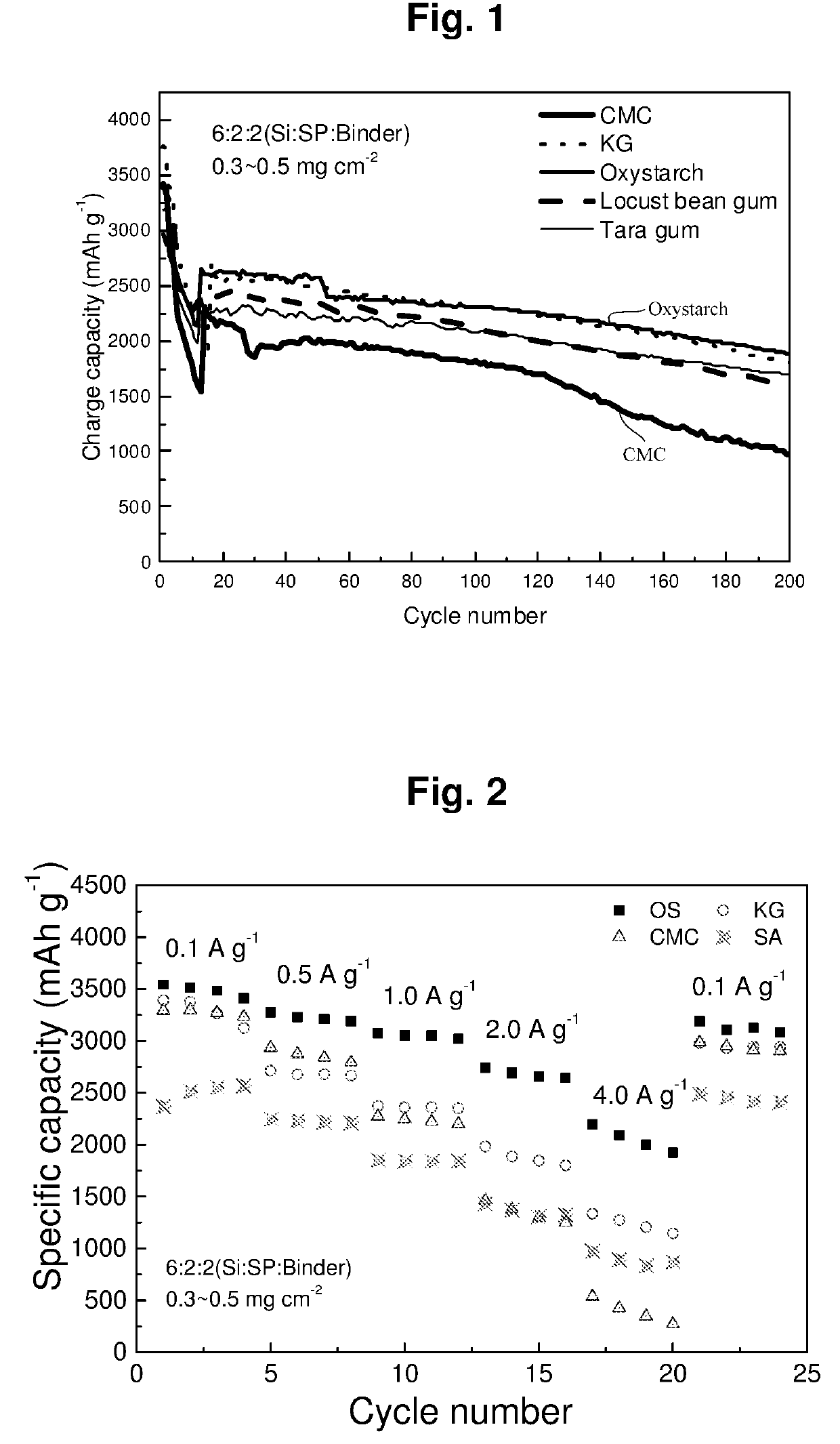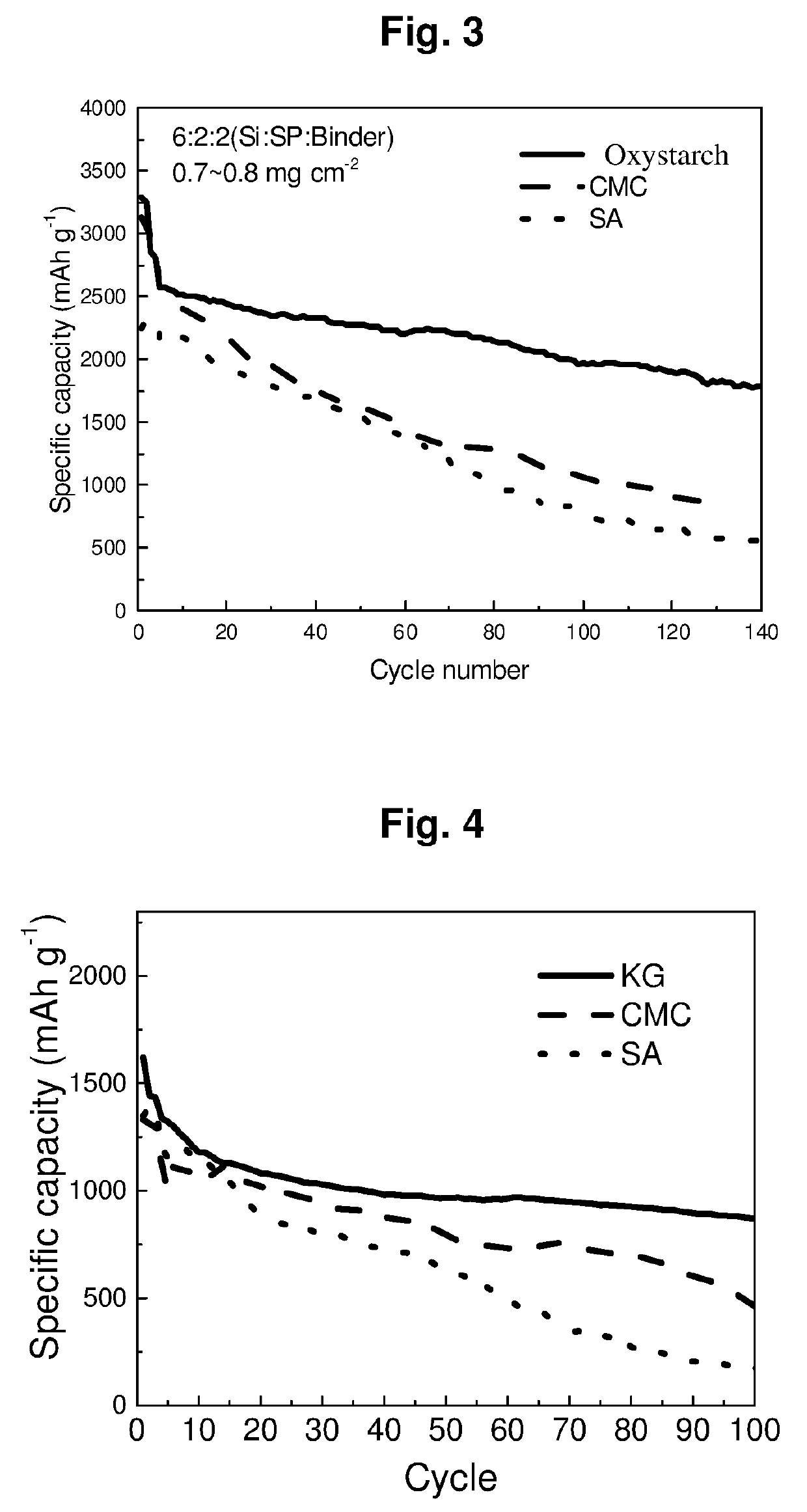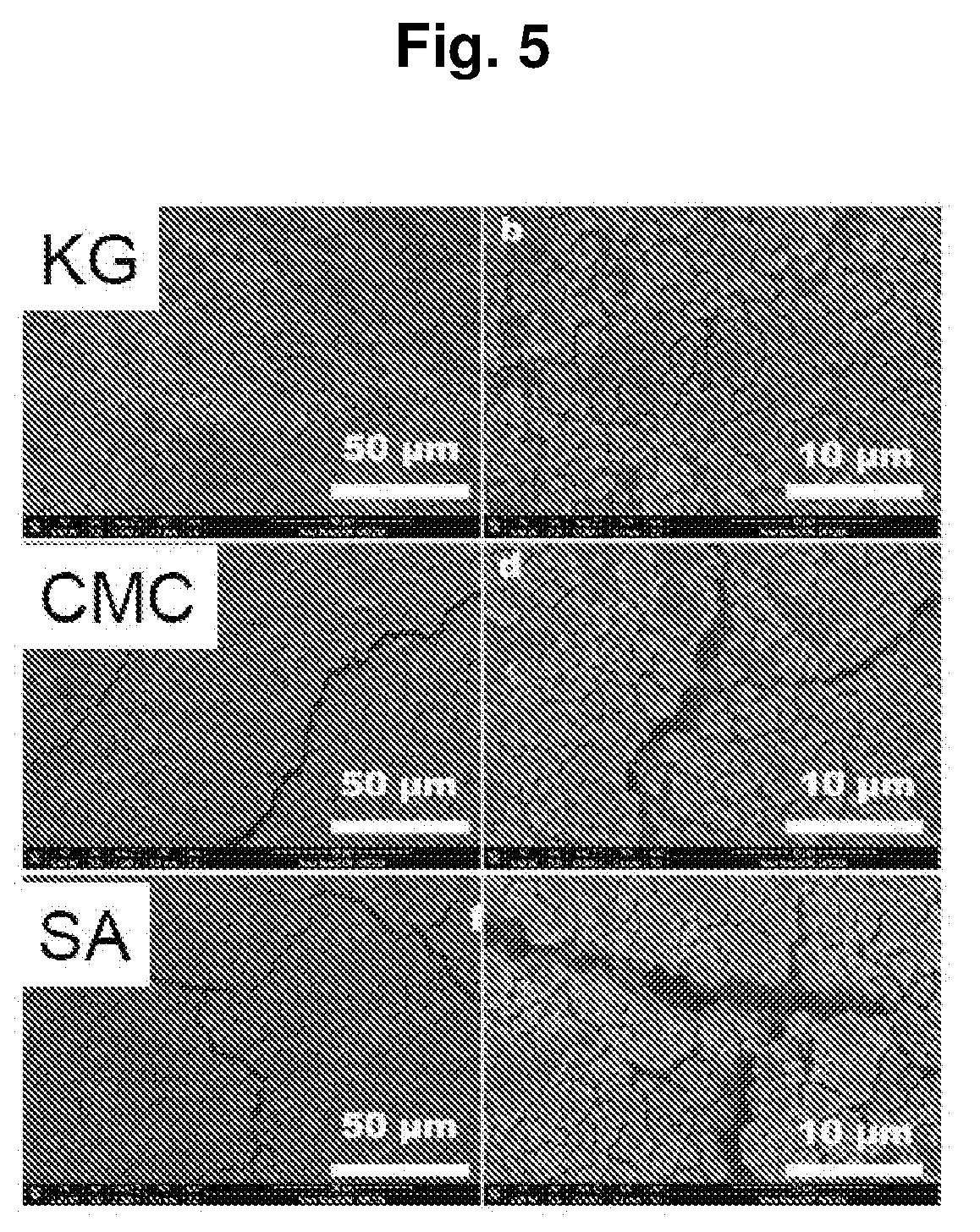Anode composition, method for preparing anode and lithium ion battery
a lithium ion battery and anode technology, applied in secondary cell servicing/maintenance, sustainable manufacturing/processing, cell components, etc., can solve the problems of large volumetric change impairing the electrochemical performance of lithium ion batteries, high irreversible capacity loss, and dramatic expansion and contraction of silicon, etc., to achieve excellent dispersibility of carbon materials, small particle size, and large specific area
- Summary
- Abstract
- Description
- Claims
- Application Information
AI Technical Summary
Benefits of technology
Problems solved by technology
Method used
Image
Examples
example 1
[Preparation of an Anode]
[0160]600 mg nano silicon particles were mixed with 200 mg Super P (SP) and 200 mg karaya gum (KG) in water to obtain a slurry. Herein, the weight ratio of Si:SP:KG was 6:2:2. After stirring for 4 h, the resultant slurry was coated onto a Cu foil, and then was dried at 70° C. in vacuum for 8 h. Finally, the coated Cu foil was cut into several Φ12 mm anodes.
[Preparation of a Cell]
[0161]A coin cell (CR2016) was assembled in an Argon-filled glovebox (MB-10 compact, MBraun) by using the anode obtained above. A Li metal foil was used as a counter electrode. 1M LiPF6 in FEC / EC / DMC (1:5:5 by volume, a mixture of fluoroethylene carbonate (FEC), ethylene carbonate (EC) and dimethyl carbonate (DMC)) was used as an electrolyte. ET20-26 was employed as a separator.
example 2
[0162]Anodes and cells were prepared in the same way as described above for Example 1, except that 200 mg oxystarch (OS) was used instead of 200 mg karaya gum (KG).
example 3
[0163]Anodes and cells were prepared in the same way as described above for Example 1, except that 200 mg locust bean gum was used instead of 200 mg karaya gum (KG).
PUM
 Login to View More
Login to View More Abstract
Description
Claims
Application Information
 Login to View More
Login to View More - R&D
- Intellectual Property
- Life Sciences
- Materials
- Tech Scout
- Unparalleled Data Quality
- Higher Quality Content
- 60% Fewer Hallucinations
Browse by: Latest US Patents, China's latest patents, Technical Efficacy Thesaurus, Application Domain, Technology Topic, Popular Technical Reports.
© 2025 PatSnap. All rights reserved.Legal|Privacy policy|Modern Slavery Act Transparency Statement|Sitemap|About US| Contact US: help@patsnap.com



